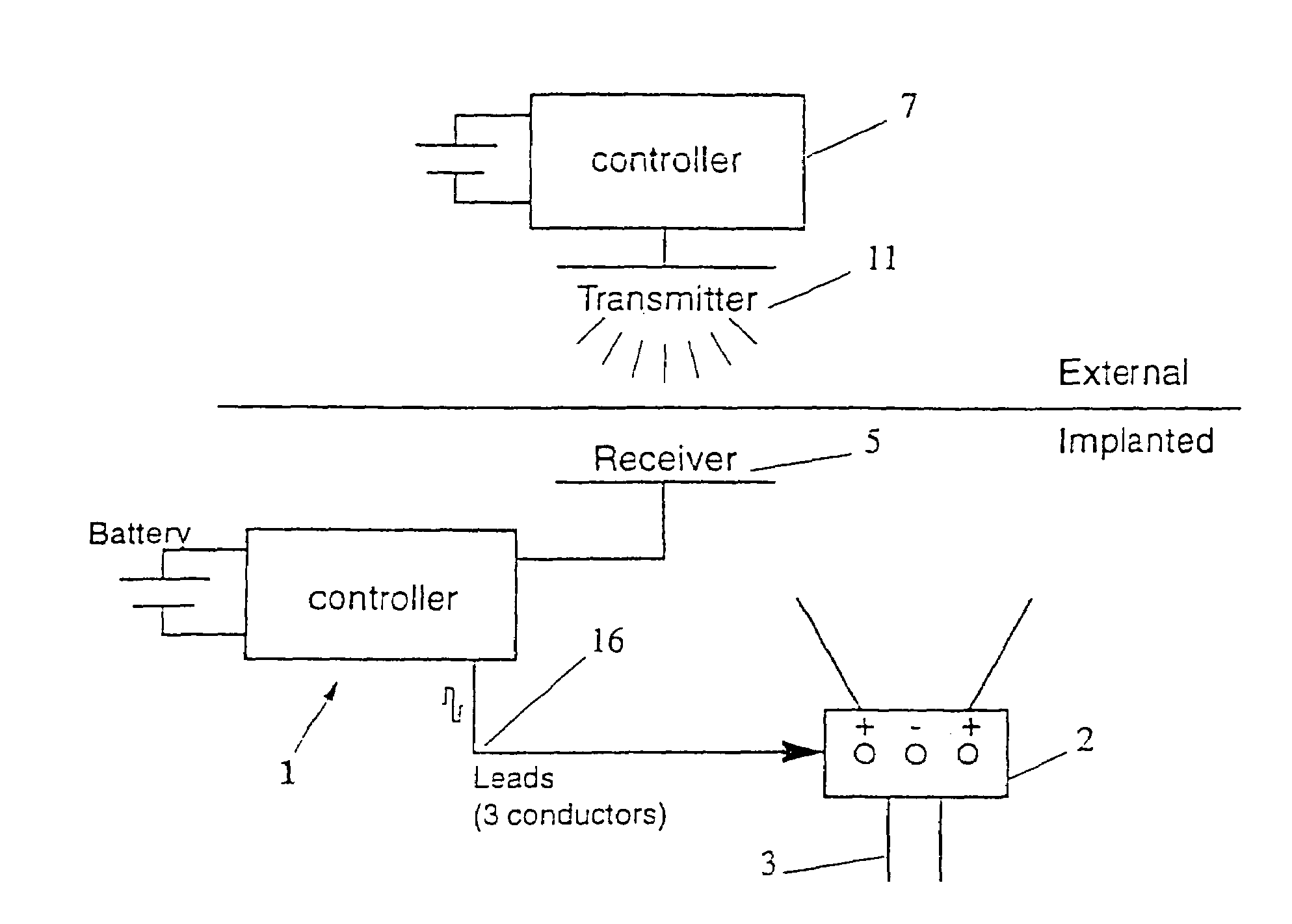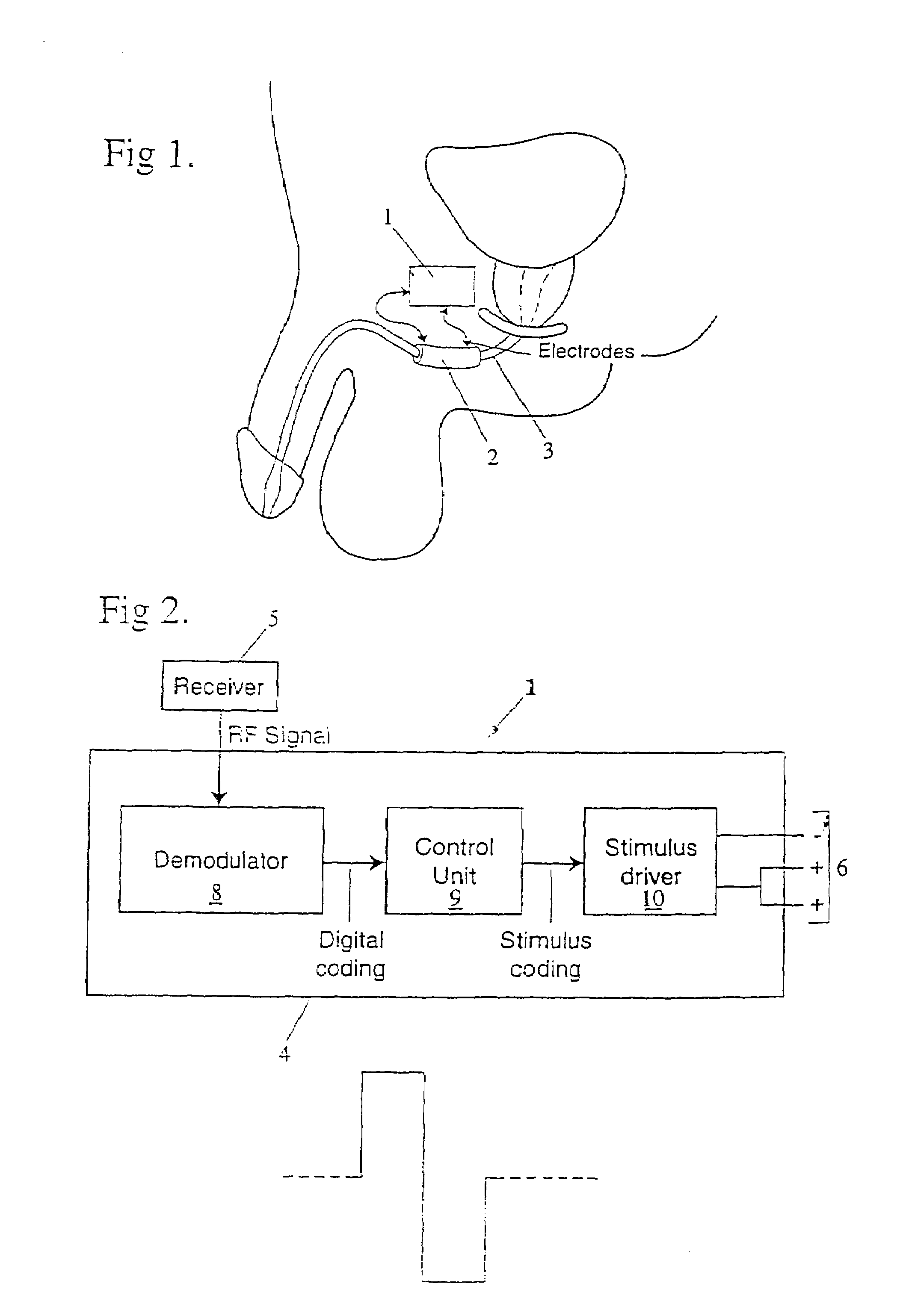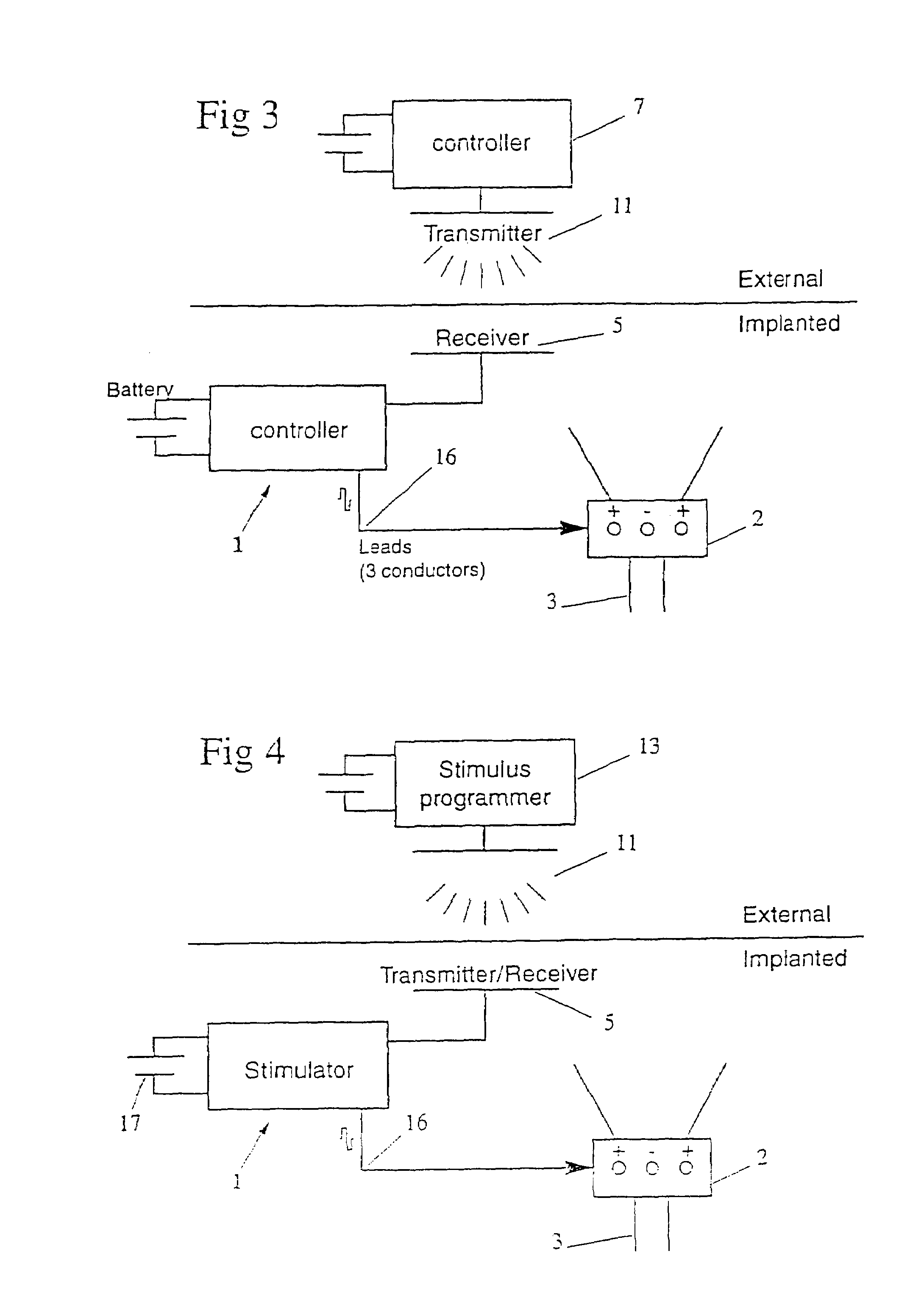Method and apparatus for treating incontinence
a technology for incontinence and treatment, applied in the field of prosthetic devices, can solve the problems of growing health problems, no well-accepted medical treatment, no low risk and reliably effective treatment, etc., and achieve the effects of low activation threshold, low usage, and low risk
- Summary
- Abstract
- Description
- Claims
- Application Information
AI Technical Summary
Benefits of technology
Problems solved by technology
Method used
Image
Examples
Embodiment Construction
[0066]Referring in general to FIGS. 1 to 6, there is illustrated an implantable sphincter stimulator 1 for selectively providing electrical stimulation to an innervated smooth muscle sphincter 2 disposed about a urethra 3 for controlling the flow of urine.
[0067]Stimulator 1 includes a signal processing unit 4 in electrical communication with a receiver 5. Signal processing unit 4 is configured to provide a predetermined electrical stimulation signal at a first output 6 of stimulator 1 in response to a signal generated remotely by controller 7 and applied at receiver 5 such that processing unit 4 selectively provides the stimulation signal to either contract sphincter 2 to substantially block the flow of urine along the urethra 3 or to allow sphincter 2 to relax and allow urine to flow.
[0068]Referring to FIG. 2 particularly, signal processing unit 4 includes a demodulator 8 responsive to the signal received at receiver 5 for providing a modulated signal to a stimulus encoder 9 which ...
PUM
 Login to View More
Login to View More Abstract
Description
Claims
Application Information
 Login to View More
Login to View More - R&D
- Intellectual Property
- Life Sciences
- Materials
- Tech Scout
- Unparalleled Data Quality
- Higher Quality Content
- 60% Fewer Hallucinations
Browse by: Latest US Patents, China's latest patents, Technical Efficacy Thesaurus, Application Domain, Technology Topic, Popular Technical Reports.
© 2025 PatSnap. All rights reserved.Legal|Privacy policy|Modern Slavery Act Transparency Statement|Sitemap|About US| Contact US: help@patsnap.com



